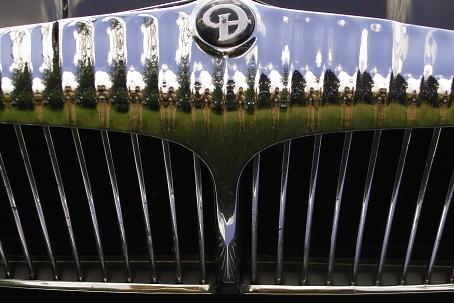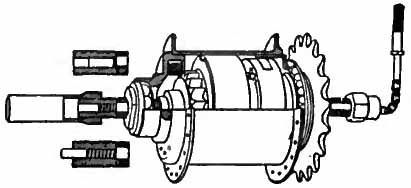|
British Motor Syndicate
The British Motor Syndicate Limited (BMS) was a company formed in November 1895 by company promoter and entrepreneur Harry John Lawson. Lawson's aim was to use BMS to raise funds from the public to establish a business with a monopoly on petrol-driven cars by acquiring as many patents as possible related to such vehicles from Gottlieb Daimler, his business associates, and other sources.Miscellaneous Companies. ''The Times'', Monday, Nov 30, 1896; pg. 17; Issue 35061 It was never the company's intention to produce motor cars, but rather to exploit the patents it had purchased by charging substantial royalties to automobile manufacturers for the right to manufacture cars using those patents. __TOC__ Patentees By the time of the first public issue, twelve months after incorporation, the following patent holders had committed themselves to BMS: * Henry P Holt of Crossley Bros, Manchester. Otto Gas Engine makers. * Gottlieb Daimler, inventor Daimler motor carriage (master paten ... [...More Info...] [...Related Items...] OR: [Wikipedia] [Google] [Baidu] |
Charles Chetwynd-Talbot, 20th Earl Of Shrewsbury
Major Charles Henry John Chetwynd-Talbot, 20th Earl of Shrewsbury, 20th Earl of Waterford, 5th Earl Talbot, KCVO (13 November 1860 – 7 May 1921), styled Viscount Ingestre from 1868 to 1877, was a British peer. Unusually for a wealthy nobleman of the period, he began several businesses connected with road transport, with mixed success. Family background Shrewsbury, who was born at Eaton Place, Belgravia, London, was the only son and heir of Charles Chetwynd-Talbot, 19th Earl of Shrewsbury and 4th Earl Talbot. His grandfather, The 18th Earl of Shrewsbury, had inherited the earldoms from a very distant cousin, and had to prove his claim to the premier earldoms of Great Britain and Ireland on the Roll in the House of Lords by demonstrating his descent from the 2nd Earl of Shrewsbury and 2nd Earl of Waterford. Shrewsbury was the nephew of: Constance, who married The 8th Marquess of Lothian; Gertrude, who married The 13th Earl of Pembroke; and Adelaide, who married The 3rd Ea ... [...More Info...] [...Related Items...] OR: [Wikipedia] [Google] [Baidu] |
Léon Bollée
Léon Bollée (1 April 1870 – 16 December 1913) was a French automobile manufacturer and inventor. Life Bollée's family were well known bellfounders and his father, Amédée Bollée (1844–1917), was the major pioneer in the automobile industry who produced several steam cars. Both Léon Bollée and his older brother Amédée-Ernest-Marie (1867–1926) became automobile manufacturers. The third brother was Camille. Early invention In 1885, at the age of 14, an early inventor, Léon Bollée made himself known by the construction of a kind of pedalo. Calculating machines In 1887, in order to help his father, a founder of bells, and to avoid errors in many calculations required for their manufacture, Bollée began work on three calculating machines: the ''Direct Multiplier'', the ''Calculating Board'' and the ''Arithmographe''. Bollée's ''Multiplier'' was the second successful direct-multiplying calculator (the first was Ramón Verea's) and it won a gold medal at the 188 ... [...More Info...] [...Related Items...] OR: [Wikipedia] [Google] [Baidu] |
Frederick Richard Simms
Frederick Richard Simms (12 August 1863 – 22 April 1944)M.I.M.E., M.I.A.E., M.I.Ae.E., M.S.E.; Member of the Institution of Mechanical Engineers, Member of the Institution of Automobile Engineers, Member of the Institution of Aeronautical Engineers, Member of the Society of Engineers was a British mechanical engineer, businessman, prolific inventor and motor industry pioneer. Simms coined the words "petrol" and "motorcar".Simms wrote from Berlin to his solicitor in London on 8 February 1891 telling Hendriks he had come to an agreement with Daimler and in that letter he uses ''petrol'' and ''motorcar''. Later Gottlieb Daimler claimed the word petrol had been in common use in England when he lived there in the 1860s.Death of Mr. F. R. Simms, ''The Times'', Monday, 24 April 1944; pg. 6 He founded the Royal Automobile Club, and the Society of Motor Manufacturers and Traders. Family and education Simms was born in Hamburg "of an old Warwickshire family", the son of Frederick ... [...More Info...] [...Related Items...] OR: [Wikipedia] [Google] [Baidu] |
Montagu Bertie, 7th Earl Of Abingdon
Montagu Arthur Bertie, 7th Earl of Abingdon (13 May 1836 – 10 March 1928) was an English peer. Early life Montagu Arthur Bertie was born on 13 May 1836 at Hanover Square, Mayfair. He was the eldest of nine children born to Montagu Bertie, 6th Earl of Abingdon (1808–1884) and Elizabeth Lavinia ( née Vernon-Harcourt) Bertie, Countess of Abingdon (1816–1858). His younger brother was Francis Bertie, 1st Viscount Bertie of Thame, who served as the British Ambassador to France. His maternal grandparents were George Granville Vernon-Harcourt, a British Member of Parliament, and Lady Elizabeth Bingham, the eldest daughter of Richard Bingham, 2nd Earl of Lucan. His paternal grandfather was Montagu Bertie, 5th Earl of Abingdon, and his first wife Emily (née Gage) Bertie, who was the fifth daughter of General Hon. Thomas Gage, the Commander-in-Chief, North America. Through his great-grandmother, Margaret Kemble Gage, he had Dutch and Huguenot ancestral roots from the Schuyler, ... [...More Info...] [...Related Items...] OR: [Wikipedia] [Google] [Baidu] |
Thomas Humber
Thomas Humber (16 October 1841 – 24 November 1910) was a British engineer and cycle manufacturer who developed and patented a safety bicycle (1884) with a diamond-shaped frame and wheels of similar size. It became a pattern for subsequent machines. Humber made many other improvements to bicycles. About 1868 he founded Humber Cycles, the bicycle manufacturing business at Beeston, Nottinghamshire later owned by Humber & Co Limited. Humber improved cycle technology through the independence of his thinking and his practical ability. The reliability of his products arose from his high standards and emphasis on quality. It all led to Humber becoming regarded as the aristocrat among bicycles. Early life Thomas Humber was born on Andrew Street, Brightside, Sheffield on 16 October 1841 the son of Samuel Humber, a tailor, and his wife Lucy ().Paul Freund, 'Humber, Thomas (1841–1910)', ''Oxford Dictionary of National Biography'', Oxford University Press, May 2012 His parents moved ... [...More Info...] [...Related Items...] OR: [Wikipedia] [Google] [Baidu] |
Mulliners (Birmingham)
Mulliners Limited of Birmingham was a British coachbuilding business in Bordesley Green, with factories in Bordesley Green and Cherrywood Roads. It made standard bodies for specialist car manufacturers. In the 19th century there were family ties with founders Mulliners of Northampton and the businesses of other Mulliner brothers and cousins but it became a quite separate business belonging to Herbert Mulliner. A Northampton coach building family founded this business in Leamington Spa for the prosperous custom attracted to the newly fashionable spa town early in the 19th century. Direct ownership and control by Mulliner family interests was lost in 1903 when it was sold to Charles Cammell, which then merged into Cammell Laird. H H Mulliner ceased to be a main-board director of Cammell Laird in 1909. Mulliners Limited continued under various ownerships until the end of 1960, when Standard-Triumph International closed it down. Herbert Hall Mulliner Henry Mulliner (1827-1887) of Le ... [...More Info...] [...Related Items...] OR: [Wikipedia] [Google] [Baidu] |
Prince Ranjitsinhji
Colonel H. H. Shri Sir Ranjitsinhji Vibhaji II, Jam Saheb of Nawanagar, (10 September 1872 – 2 April 1933), often known as Ranji or K. S. Ranjitsinhji, was the ruler of the Indian princely state of Nawanagar from 1907 to 1933, as Maharaja Jam Saheb, and a noted Test cricketer who played for the English cricket team. He also played first-class cricket for Cambridge University, and county cricket for Sussex. Ranji has widely been regarded as one of the greatest batsmen of his era. Neville Cardus described him as "the Midsummer night's dream of cricket". Unorthodox in technique and with fast reactions, he brought a new style to batting and revolutionised the game. Previously, batsmen had generally pushed forward; Ranji took advantage of the improving quality of pitches in his era and played more on the back foot, both in defence and attack. He is particularly associated with one shot, the leg glance, which he invented or popularised. The first-class cricket tournament ... [...More Info...] [...Related Items...] OR: [Wikipedia] [Google] [Baidu] |
Ranjitsinhji By Reinhold Thiele
Colonel H. H. Shri Sir Ranjitsinhji Vibhaji II, Jam Saheb of Nawanagar, (10 September 1872 – 2 April 1933), often known as Ranji or K. S. Ranjitsinhji, was the ruler of the Indian princely state of Nawanagar from 1907 to 1933, as Maharaja Jam Saheb, and a noted Test cricketer who played for the English cricket team. He also played first-class cricket for Cambridge University, and county cricket for Sussex. Ranji has widely been regarded as one of the greatest batsmen of his era. Neville Cardus described him as "the Midsummer night's dream of cricket". Unorthodox in technique and with fast reactions, he brought a new style to batting and revolutionised the game. Previously, batsmen had generally pushed forward; Ranji took advantage of the improving quality of pitches in his era and played more on the back foot, both in defence and attack. He is particularly associated with one shot, the leg glance, which he invented or popularised. The first-class cricket tournament ... [...More Info...] [...Related Items...] OR: [Wikipedia] [Google] [Baidu] |
The Great Horseless Carriage Company
The Great Horseless Carriage Company Limited was formed in May 1896 with a capital of £750,000 in shares of £10 each "of which £250,0000 was for working capital". The company was formed to carry on the horseless carriage industry in England and works with railway and canal adjoining were secured at Coventry. The rights that were purchased had little lasting value and after a number of financial reconstructions beginning in 1898 all activities were terminated by 1910. Business "To take up work and develop this new vehicle industry; to acquire licences for patents, purchase master patents and receive royalties, to license and form subsidiary companies to sell foreign rights and concessions and to generally establish and work the trade in this country."The Great Horseless Carriage Company Limited ''The Times'', Tuesday, 19 May 1896; pg. 17; Issue 34894. It was intended to dominate the industry through its subsidiary The British Motor Syndicate Limited by acquiring all "master p ... [...More Info...] [...Related Items...] OR: [Wikipedia] [Google] [Baidu] |
Daimler Company
The Daimler Company Limited ( ), prior to 1910 The Daimler Motor Company Limited, was an independent British motor vehicle manufacturer founded in London by H. J. Lawson in 1896, which set up its manufacturing base in Coventry. The company bought the right to the use of the Daimler name simultaneously from Gottlieb Daimler and Daimler-Motoren-Gesellschaft of Cannstatt, Germany. After early financial difficulty and a reorganisation of the company in 1904, the Daimler Motor Company was purchased by Birmingham Small Arms Company (BSA) in 1910, which also made cars under its own name before the Second World War. In 1933, BSA bought the Lanchester Motor Company and made it a subsidiary of Daimler Company. Daimler was awarded a Royal Warrant to provide cars to the British monarch in 1902; it lost this privilege in the 1950s after being supplanted by Rolls-Royce. Daimler occasionally used alternative technology: the Knight engine which it further developed in the early twenti ... [...More Info...] [...Related Items...] OR: [Wikipedia] [Google] [Baidu] |
Autocar (magazine)
''Autocar'' (originally ''The Autocar'') is a weekly British automobile magazine published by the Haymarket Media Group. It was first published in 1895 and refers to itself as "the world's oldest car magazine". There are now several international editions, including for China, India, New Zealand, and South Africa. History The publication was launched as ''The Autocar'' by Iliffe and Son Ltd. "in the interests of the mechanically propelled road carriage" on 2 November 1895 when, it is believed, there were only six or seven cars in the United Kingdom. L. J. K. Setright suggests that the magazine was set up by Henry Sturmey as an organ of propaganda for Harry J. Lawson, founder of the Daimler Company and a journalist on the magazine in its early days. Henry Sturmey stood down as editor of ''The Autocar'' magazine and left the company in 1901. ''Autocar'' claims to have invented the road test in 1928 when it analysed the Austin 7 Gordon England Sunshine Saloon. ''Aut ... [...More Info...] [...Related Items...] OR: [Wikipedia] [Google] [Baidu] |
Henry Sturmey
John James Henry Sturmey (1857–1930), known as Henry Sturmey, is best remembered as the inventor with James Archer of the Sturmey-Archer three-speed hub for bicycles, but he was a technical editor and journalist heavily involved as a pioneer of the cycling and automotive industries. Born at Norton-sub-Hamdon, Somerset, on 28 February 1857 he died aged 72 at his home in Coventry on 8 January 1930. Maths and science Henry Sturmey rode his first bicycle while at school in Weymouth when in his mid-teens in 1872 and became a keen cyclist. He was a touring enthusiast rather than interested in track racing. Sturmey's first post was an assistant-master at Brixton Hill College, London S.W. He resigned in 1877 to devote himself to writing a book on cycling published as ''The Indispensable Bicyclist's Handbook''. Dealing with every bicycle on the market and 300 pages long the first edition was sold out within a month. Following an unsuccessful attempt to sell bicycles made to his own d ... [...More Info...] [...Related Items...] OR: [Wikipedia] [Google] [Baidu] |

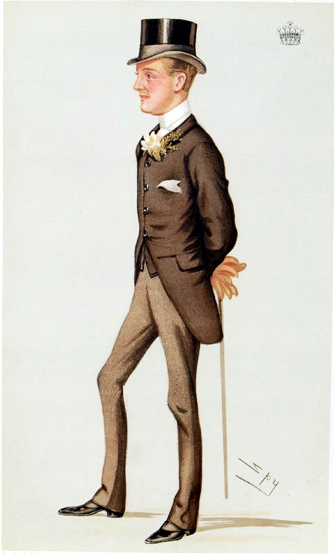
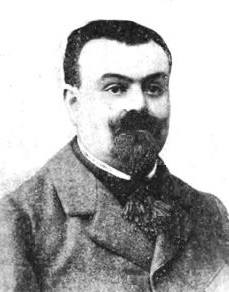

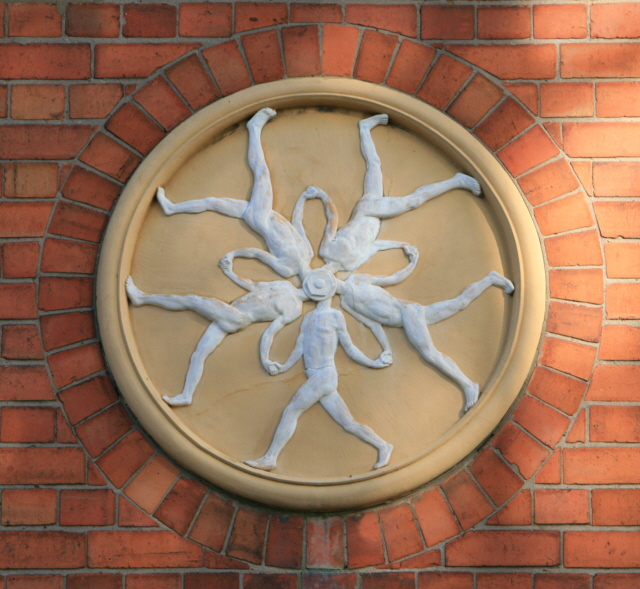



.jpg)
